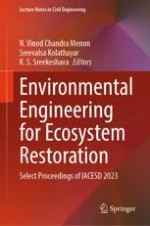2024 | OriginalPaper | Buchkapitel
A Review on Life Cycle Assessment in Silk Textile Industry
verfasst von : Sobia Khan, Rahul Dandautiya
Erschienen in: Environmental Engineering for Ecosystem Restoration
Verlag: Springer Nature Singapore
Aktivieren Sie unsere intelligente Suche, um passende Fachinhalte oder Patente zu finden.
Wählen Sie Textabschnitte aus um mit Künstlicher Intelligenz passenden Patente zu finden. powered by
Markieren Sie Textabschnitte, um KI-gestützt weitere passende Inhalte zu finden. powered by
